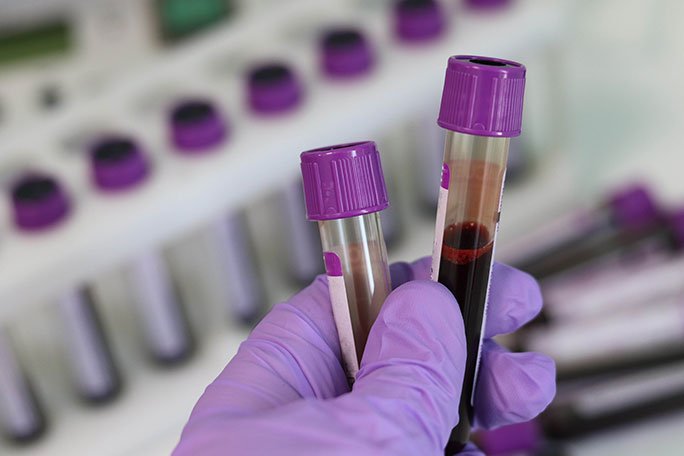Challenges and Strategies for Blood Collection Tubes containing Anticoagulants in US Hospitals
Summary
- Hospitals in the United States face challenges in procuring and maintaining specialized equipment for blood collection tubes containing anticoagulants due to various factors such as cost, compatibility, and Regulations.
- The complexity of managing specialized equipment for blood collection tubes containing anticoagulants requires hospitals to invest in proper training for staff and regular maintenance to ensure accurate and reliable results.
- Collaboration with suppliers, ongoing education, and leveraging technology are essential strategies for hospitals to overcome challenges in the procurement and maintenance of specialized equipment for blood collection tubes containing anticoagulants.
The Importance of Proper Equipment for Blood Collection Tubes Containing Anticoagulants
When it comes to blood collection tubes containing anticoagulants, accuracy and precision are crucial for obtaining reliable Test Results. Hospitals rely on specialized equipment to handle, process, and store these tubes to ensure that the blood samples are preserved properly. Inaccurate Test Results can lead to misdiagnoses, incorrect treatment plans, and compromised patient care. Therefore, hospitals must prioritize the procurement and maintenance of specialized equipment for blood collection tubes containing anticoagulants.
Challenges in Procurement
- Cost: Specialized equipment for blood collection tubes containing anticoagulants can be expensive, posing a financial challenge for hospitals, especially those operating on tight budgets.
- Compatibility: Not all equipment is compatible with every type of blood collection tube or anticoagulant. Hospitals must ensure that the equipment they procure is appropriate for the specific tubes they use.
- Regulations: Hospitals must comply with strict Regulations and guidelines related to the procurement of medical equipment, adding an extra layer of complexity to the process.
Challenges in Maintenance
- Training: Proper maintenance of specialized equipment requires trained staff who understand how to operate, clean, and troubleshoot the equipment effectively.
- Calibration: Regular calibration of equipment is essential to ensure accuracy and reliability. Hospitals must stay on top of maintenance schedules to prevent equipment malfunctions.
- Supplier Dependence: Hospitals often rely on suppliers for maintenance and support, which can lead to delays and disruptions in service if issues arise.
Strategies for Overcoming Challenges
To address the challenges faced by hospitals in procuring and maintaining specialized equipment for blood collection tubes containing anticoagulants, several strategies can be implemented:
Collaboration with Suppliers
Building strong partnerships with equipment suppliers can help hospitals navigate the procurement process more effectively. Suppliers can provide guidance on selecting the right equipment, offer training for staff, and provide ongoing support for maintenance and troubleshooting.
Ongoing Education and Training
Investing in training programs for staff involved in handling blood collection tubes containing anticoagulants is essential. Regular education sessions can help ensure that staff are up-to-date on best practices for using and maintaining equipment properly.
Leveraging Technology
Advancements in technology have led to the development of innovative solutions for managing blood collection tubes containing anticoagulants. Hospitals can explore automation, digital tracking systems, and remote monitoring to improve efficiency and accuracy in handling these tubes.
By implementing these strategies and prioritizing the procurement and maintenance of specialized equipment for blood collection tubes containing anticoagulants, hospitals in the United States can overcome the challenges they face and ensure high-quality patient care.

Disclaimer: The content provided on this blog is for informational purposes only, reflecting the personal opinions and insights of the author(s) on the topics. The information provided should not be used for diagnosing or treating a health problem or disease, and those seeking personal medical advice should consult with a licensed physician. Always seek the advice of your doctor or other qualified health provider regarding a medical condition. Never disregard professional medical advice or delay in seeking it because of something you have read on this website. If you think you may have a medical emergency, call 911 or go to the nearest emergency room immediately. No physician-patient relationship is created by this web site or its use. No contributors to this web site make any representations, express or implied, with respect to the information provided herein or to its use. While we strive to share accurate and up-to-date information, we cannot guarantee the completeness, reliability, or accuracy of the content. The blog may also include links to external websites and resources for the convenience of our readers. Please note that linking to other sites does not imply endorsement of their content, practices, or services by us. Readers should use their discretion and judgment while exploring any external links and resources mentioned on this blog.
